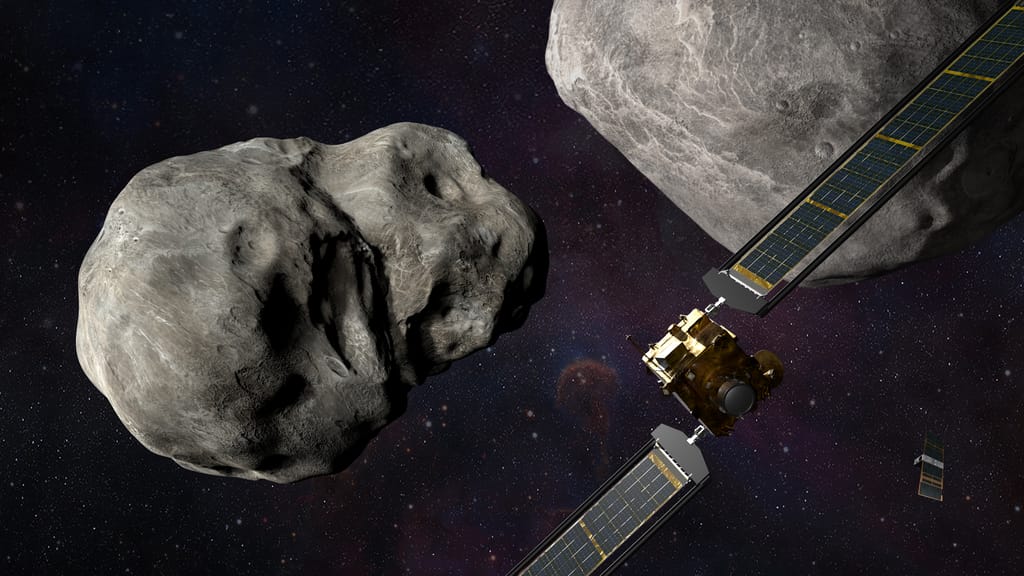
NASA is going to launch a spacecraft this month to crash it into an asteroid. This new experiment is going to help in understanding planetary defense in case of future catastrophic collisions.
NASA’s new planetary defense experiment
An asteroid could always crash into Earth. But, how do we redirect its path and avoid a catastrophic collision? This NASA flight demonstration can help in figuring out how. “The mission is NASA’s first flight demonstration for planetary defense,” stated NASA officials. The DART project or the Double Asteroid Redirection Test starts with the launch of the SpaceX Falcon 9 rocket from California’s Vandenberg Space Force Base at 10:20 pm PST. However, according to the agency, the launch window is instantaneous. This means that if it does not launch at the given time, they have to wait for another day.
For a few months, the Didymos asteroid system is very close to the earth. They are twin bodies circling each other. While they do not present any danger to Earth, they travel close enough that the DART mission can quickly reach it. The mission has 84 days to launch and so as to reach between September 26 and October 1 of 2022. “We’ve spent a good deal of effort, planning and coordinating with other agencies and nations on what we might do and who is going to do what as far as response to an impact threat,” said Lindley Johnson. Johnson is NASA’s planetary defense officer.
How will DART stop asteroids?
The spaceship will help in deviating possible asteroids by slightly altering its path. “This isn’t going to destroy the asteroid. It just going to give it a small nudge,” added Nancy Chabot. Chabot is the coordination lead for DART at Johns Hopkins University Applied Physics Laboratory. However, NASA is not sure how heavy the nudge is going to be. But, the data from this mission will be used for plotting future missions.
Moreover, the spacecraft will travel to the asteroid and study t. It will also release a small LICIACube unit. LICIACube will monitor and reply to audiovisuals of this mission and observe as it strikes Dimorphos, the Didymos moonlet. DART will approach the moonlet head-on at a speed of 15,000 mph. LICIACube is the Italian Space Agency’s first interplanetary spacecraft. “The DART spacecraft itself will be completely destroyed and throw out a cloud of debris,” added Chabot.
Scientists on earth will be monitoring it in real-time with the help of telescopes on Earth and data from LICIACube. “We need to do this because … DART is going to blast many tons of material off Dimorphos, maybe thousands of tons, and we need to know how much there is, how fast it’s going and where it’s headed for our calculations,” explained Andy Cheng, the DART investigation team with Johns Hopkins.
